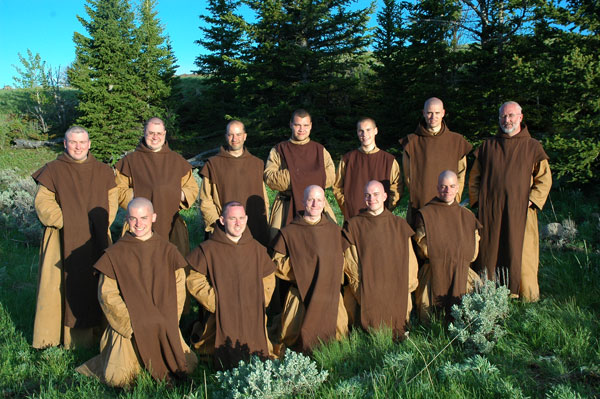| << Chapter < Page | Chapter >> Page > |
All the people we have discussed so far still have some sort of normal life. Some priests may be forbidden to marry. Others may dress slightly differently: perhaps putting on a clerical collar at times. But they can still take a day off to go shopping. They earn money for their religious work, they go on holiday, they relax with their friends. Even if they are personally always very religious, they are not necessarily always playing the formal religious role.
But there are also people who take religion even more seriously. Indeed, their faith is so strong that they decide to take on a full–time religious role. They "renounce the world" and live out their religious beliefs 24 hours a day, 365 days a year, for the rest of their lives. These people are called monks if they are male, and nuns if they are female. Like Catholic priests, they are forbidden to marry, indeed to have any sexual activity at all. They often wear distinctive clothing, like long robes. Their daily life is regulated down to the last minute, with set periods of prayer, meditation and study prescribed for every day.

Monks and nuns are not found in all religions. In Christianity, we find it in the Catholic and Orthodox Churches, but not so often within Protestantism. Islam, Judaism and the Baha'i Faith actively discourage their members from taking up such an extreme lifestyle.
However, it is still a major way of life within Buddhist and Hindu societies. Buddhist monks and nuns are called bhikkhus and bhikkhunis and wear robes that are yellow, maroon, grey or black, depending on which form of Buddhism they belong to. In Hinduism, it is usually only men who renounce the world, and they are called sannyasins . They wear little clothing and practice self–denial, meditation and rituals. In both these religions, monks and nuns are not supposed to do any regular work, but to depend on the goodwill and charity of the community for their food, clothing and shelter.
Monks live together in a building called a monastery (a monastery for nuns is sometimes called a nunnery or a convent ). But there are a small number who decide that even this is still too much of a worldly life for them. They spend long periods, even years, by themselves engaged in solitary religious practice and are called hermits . The hermit lifestyle is now rare in Christianity and Buddhism – at most, a Christian or Buddhist monk may live this way for a month or two. But it is still highly prized in Hinduism in India.

The hermit lifestyle often involves a degree of asceticism . This means that the hermit will ignore the needs of the body or even take steps to undergo deliberate trials of pain and deprivation, all in search of religious experience.
In Christian history, the hermit lifestyle started out in the deserts of the Middle East, centuries before monks started to live together. In fact, our word "monk" comes from the Greek word monachos , meaning "one who lives alone".
Christian monks or nuns take vows that they will live the monastic life until they die. In principle this has always been the case and remains so today, but in practice, if you find out that becoming a monk was a big mistake, there is a way to get the church authorities to release you. Much the same is true in Hinduism, but there it is not so much a question of religious authorities, but of whether your family and community will take you back. In Buddhism, vows have never been taken for life. A Buddhist may become a monk for a month, a year, or until he just feels like doing something else!

Notification Switch
Would you like to follow the 'Learning about religion' conversation and receive update notifications?